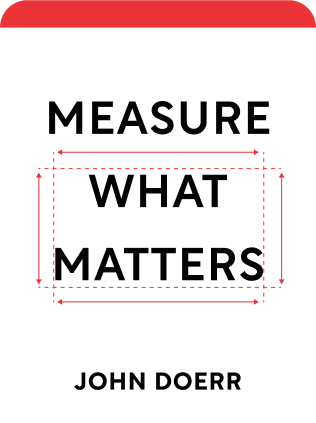

This article is an excerpt from the Shortform summary of "Measure What Matters" by John Doerr. Shortform has the world's best summaries of books you should be reading.
Like this article? Sign up for a free trial here .
What are some good OKR product management examples? How can using OKRs help you achieve product management goals?
OKR product management goals can focus on several things. In this example for OKR product management, the company had already been using OKRs in a superficial way. But when they changed this, the culture benefitted, and so did the product. This shows that OKR product management goals can have far-reaching effects on a company.
Read more to find out how to implement OKR project management goals helped change Lumeris for the better.
OKR Product Management Examples: Lumeris
Implementing product OKRs successfully requires transparency and accountability. These traits can often foster a positive workplace culture, but sometimes, a culture is too negative and distrusting for OKRs to work. If that’s the case, you need to first focus on building the company’s culture. Once you’ve established the foundation of trust, you can then implement OKRs, and they’ll help further deepen trust and interdependence in your community.
Lumeris is a tech firm that provides expertise, services, and software to health care providers and patients. When Andrew Cole, then head of HR, arrived at Lumeris, the company had already been using OKRs for a few quarters. But Cole quickly realized that their use was superficial—at the end of the quarter, people would just adjust the numbers on the OKR platform and say they’d met their goals. There was no accountability or buy-in. Many people didn’t even know their OKRs. So, Cole decided that OKRs for product management would be the way to get everyone baack on track.
But the problem went beyond the way Lumeris used OKRs. The failed OKR system was the result of a negative workplace culture, which Cole needed to address before OKRs could be effective.
Problem #1: Executives had introduced OKRs in an attempt to merge the conflicting cultures of Lumeris (a risk-taking and transparent company) and their partner, health insurance company Essence (risk-averse and protective of their proprietary methods). As long as these two organizations remained separate entities, with two separate cultures, the OKR system couldn’t function successfully. This is where the OKR product management system comes in.
- Solution: Lumeris incorporated Essence under its own umbrella.
Problem #2: Lumeris’s stated values included passion, teamwork, personal ownership, and accountability, but many of Lumeris’s top leaders were autocrats, uninterested in reinforcing these values. This created a gap between the company’s stated values and its behavior, which created distrust among employees.
- Solution: Cole let the autocratic leaders go and hired ones who exemplified the company’s values.
Problem #3: Although Lumeris’s new leadership team told employees that they had the right—the obligation, even—to hold executives accountable for living Lumeris’s core values, employees initially declined to give feedback to leaders. They were afraid of being punished for speaking too bluntly.
- Solution: Executives and HR leaders spoke to each employee personally to reiterate that they’d reward employees for upholding the culture’s values, collaborating, and being transparent and honest.
Problem #4: Many people in HR weren’t a good fit for the new culture Cole was trying to build. Many in middle management also weren’t on board with the new culture changes.
- Solution: In less than 18 months, Cole and the executives replaced 85% of their HR staff. Then, they worked on retraining old managers and hiring new managers.
Reintroducing OKRs to Nurture and Sustain the Culture
With the company’s culture now providing a strong foundation, HR was finally ready to reintroduce OKRs. Cole required everybody in the company to be retrained in OKRs, then instituted a 60-day pilot run with 100 employees. The division’s senior vice president held his employees accountable by reading their OKRs closely and calling employees out when the OKRs didn’t make sense or the metrics were misaligned with the current data. This prompted employees to take their OKRs seriously, and to develop a strong OKR product management system.
At the end of the pilot, 98% was using the OKR system and 92% said they now understood what their managers expected of them.
Getting Buy-In by Focusing on Culture
As they rolled out product OKRs with the entire 800-person staff, Cole and his HR team focused on questions that linked product OKRs to the company’s culture and values. They discussed with managers and staff:
- Why does our work matter? How does our work contribute to the company’s goals and values?
- Why does transparency in a company matter? Why would you want peers from other divisions to know what your goals are?
- Why does accountability matter? How can we both hold ourselves and others accountable while remaining respectful of others’ failings and forgiving of our own?
- How can we help one another reach our objectives? How do we make a strong case for our objective so other teams are willing and excited to make it one of their own priorities and help us make it to the finish line?
- How do we know when it’s time to revise an OKR, or time to scrap it altogether?
At the end of the quarter, 75% of employees were engaging with the OKR system and voluntary attrition was down.
OKR product management goals can help you frame your objectives for each product, which will help the company overall.

———End of Preview———
Like what you just read? Read the rest of the world's best summary of John Doerr's "Measure What Matters" at Shortform .
Here's what you'll find in our full Measure What Matters summary :
- How Google uses OKRs to rally 100,000 employees in the right direction
- How to avoid setting useless OKRs, and how to set great ones
- Key subtle behaviors your team must master to make OKRs work






